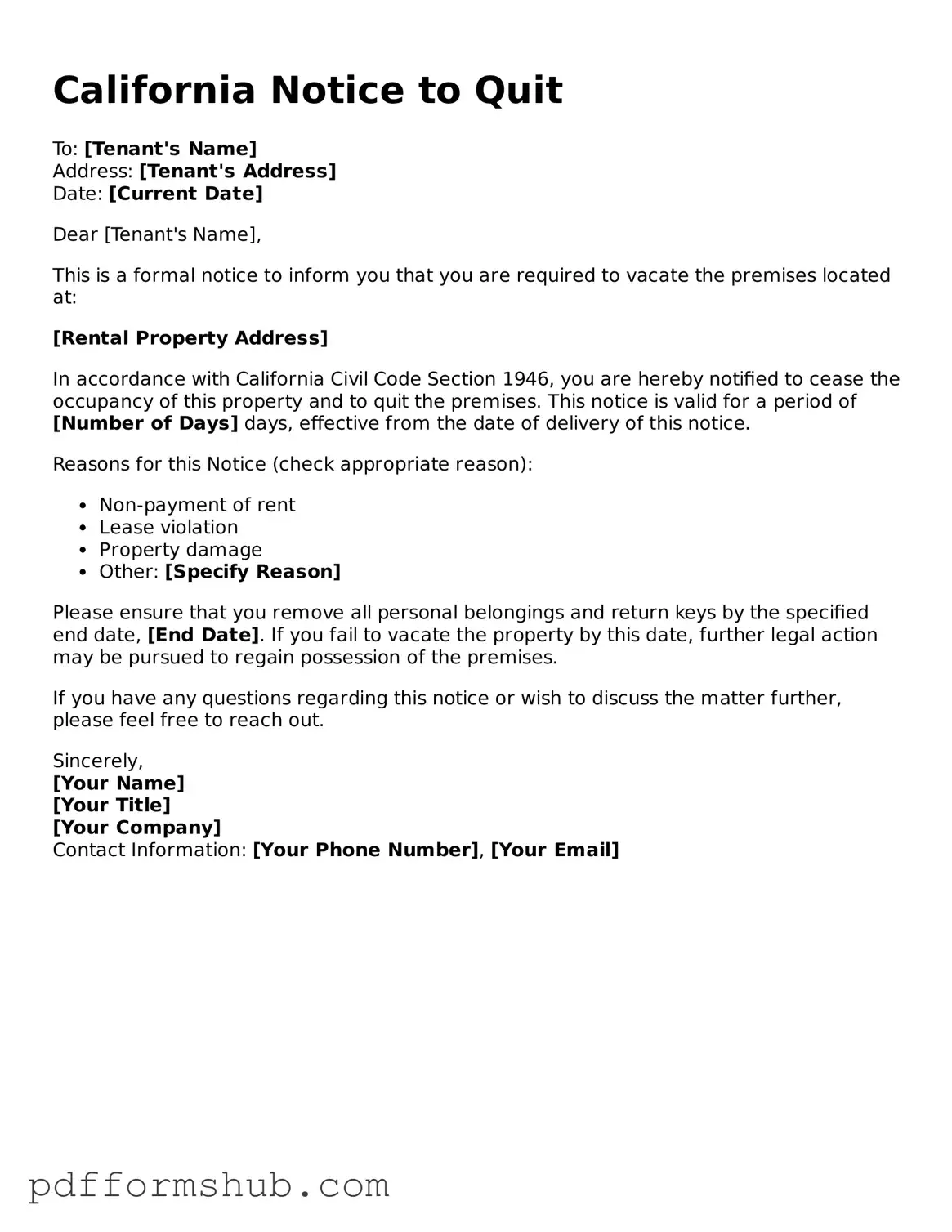Attorney-Verified Notice to Quit Form for California State
The California Notice to Quit form is a legal document used by landlords to formally notify tenants of their intention to terminate a rental agreement. This notice serves as a crucial step in the eviction process, providing tenants with the opportunity to address any lease violations or vacate the property. Understanding this form is essential for both landlords and tenants to ensure compliance with state laws.
Ready to take the next step? Fill out the Notice to Quit form by clicking the button below.
Customize Form
